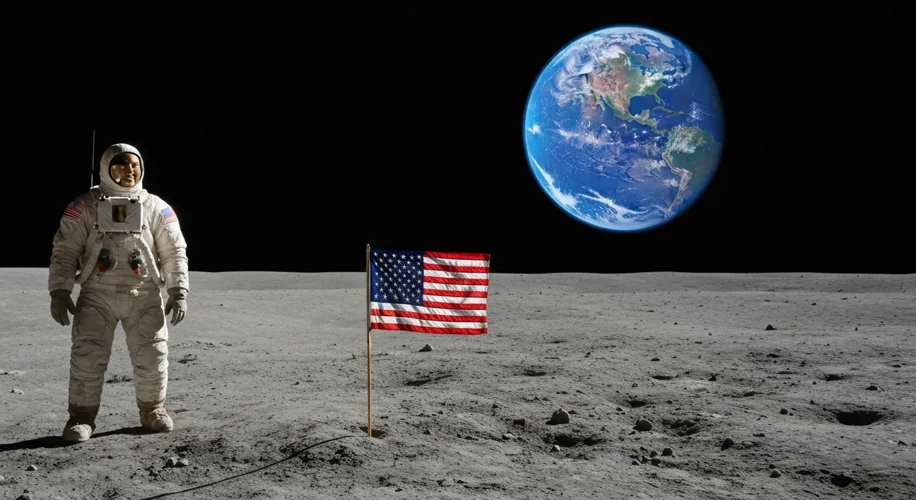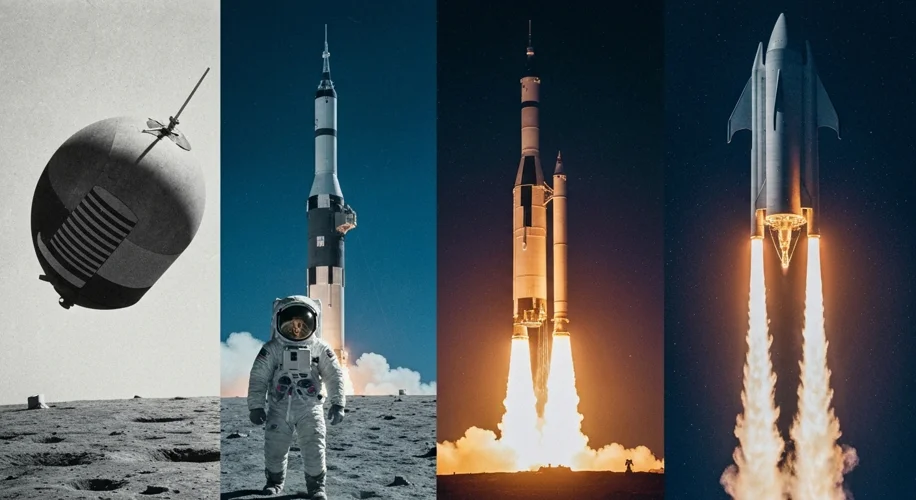The recent spectacular, albeit failed, launches of SpaceX’s Starship have once again thrust the ambition of humankind to reach the stars into the global spotlight. These ambitious attempts, while marked by dramatic explosions, are not unique in the history of rocketry. They echo the perilous early days of space exploration, a time when the very act of lifting a machine off the Earth was a monumental, often fatal, endeavor.
Just over sixty years ago, the world watched, often with bated breath, as two superpowers, the United States and the Soviet Union, engaged in a high-stakes contest not for territory or ideology on Earth, but for dominance in the vast, silent expanse of space. This was the Space Race, a pivotal chapter in human history driven by a complex mix of scientific curiosity, national pride, and the ever-present tension of the Cold War.
The roots of this monumental undertaking can be traced back to the aftermath of World War II. The advanced rocket technology developed by Nazi Germany, particularly the V-2 rocket, became a powerful prize for both the victorious Allied powers. German scientists and their expertise were a critical asset, fueling the nascent missile programs of the emerging Cold War rivals.

The Soviet Union, under the shrewd leadership of Nikita Khrushchev, struck first. On October 4, 1957, the world was stunned by the launch of Sputnik 1, the first artificial satellite. This small, beeping sphere, orbiting the Earth, was a resounding propaganda victory for the USSR and a wake-up call for the United States. It demonstrated that the Soviets possessed the capability to deliver a payload into orbit, a capability that could theoretically be extended to deliver nuclear warheads.
The American response was swift and, initially, fraught with setbacks. The early attempts to launch their own satellites, like the Vanguard TV3 in December 1957, ended in ignominious failure, exploding on the launchpad and further fueling Soviet confidence. President Dwight D. Eisenhower, recognizing the gravity of the situation, pushed for accelerated efforts, leading to the establishment of NASA in 1958 and the successful launch of Explorer 1 shortly thereafter.
The race intensified. The Soviets achieved another major milestone in April 1961 when Yuri Gagarin became the first human in space, completing a single orbit of the Earth aboard Vostok 1. His simple utterance, “Poyekhali!” (“Let’s go!”), became a symbol of Soviet triumph. However, the Americans were not far behind. Just weeks later, Alan Shepard became the first American in space with a suborbital flight, followed by John Glenn’s orbital mission in February 1962.
But the ultimate prize, the one that would capture the imagination of the world and cement a nation’s legacy, was the Moon. President John F. Kennedy, in a powerful speech in 1962, declared, “We choose to go to the Moon in this decade and do the other things, not because they are easy, but because they are hard; because that goal will serve to organize and measure the best of our energies and skills, because that challenge is one that we are willing to accept, one we are unwilling to postpone, and one which intends to win.”
The Apollo program was born out of this audacious challenge. It was a monumental undertaking, requiring unprecedented levels of engineering, scientific collaboration, and sheer willpower. Developing the Saturn V rocket, a behemoth capable of lifting the heavy Apollo spacecraft to the Moon, was a feat of incredible complexity. The astronauts themselves, like Neil Armstrong, Buzz Aldrin, and Michael Collins of Apollo 11, underwent rigorous training, preparing for a journey into the unknown.

On July 20, 1969, that dream became a reality. Neil Armstrong’s words, “That’s one small step for man, one giant leap for mankind,” resonated across the globe as he became the first human to walk on the Moon. The Apollo program continued, with several more successful lunar landings, each mission pushing the boundaries of human achievement.
The consequences of the Space Race were profound. Beyond the technological advancements in rocketry, computing, and materials science, it fostered a spirit of innovation and inspired generations. It demonstrated what humanity could achieve when united by a common, audacious goal. However, it also underscored the immense cost and inherent risks involved. The tragic loss of the Apollo 1 crew in a launchpad fire in 1967 served as a stark reminder of the dangers.
Today, as we witness the bold, sometimes explosive, endeavors of companies like SpaceX, we are reminded that the challenges of reaching space have not fundamentally changed. The physics of escaping Earth’s gravity remain unforgiving. The recent failures of Starship, while disheartening to some, are part of a continuum of innovation, much like the early failures of Mercury and Gemini rockets. They represent the relentless human drive to push beyond current limitations, to explore, and to ultimately, as SpaceX’s Elon Musk envisions, make humanity a multi-planetary species.

The race to the Moon may have concluded, but the human aspiration to explore the cosmos is more vibrant than ever. The spirit of those early pioneers, facing the unknown with courage and determination, continues to fuel our journey beyond Earth, one launch, one discovery, one small step at a time.

